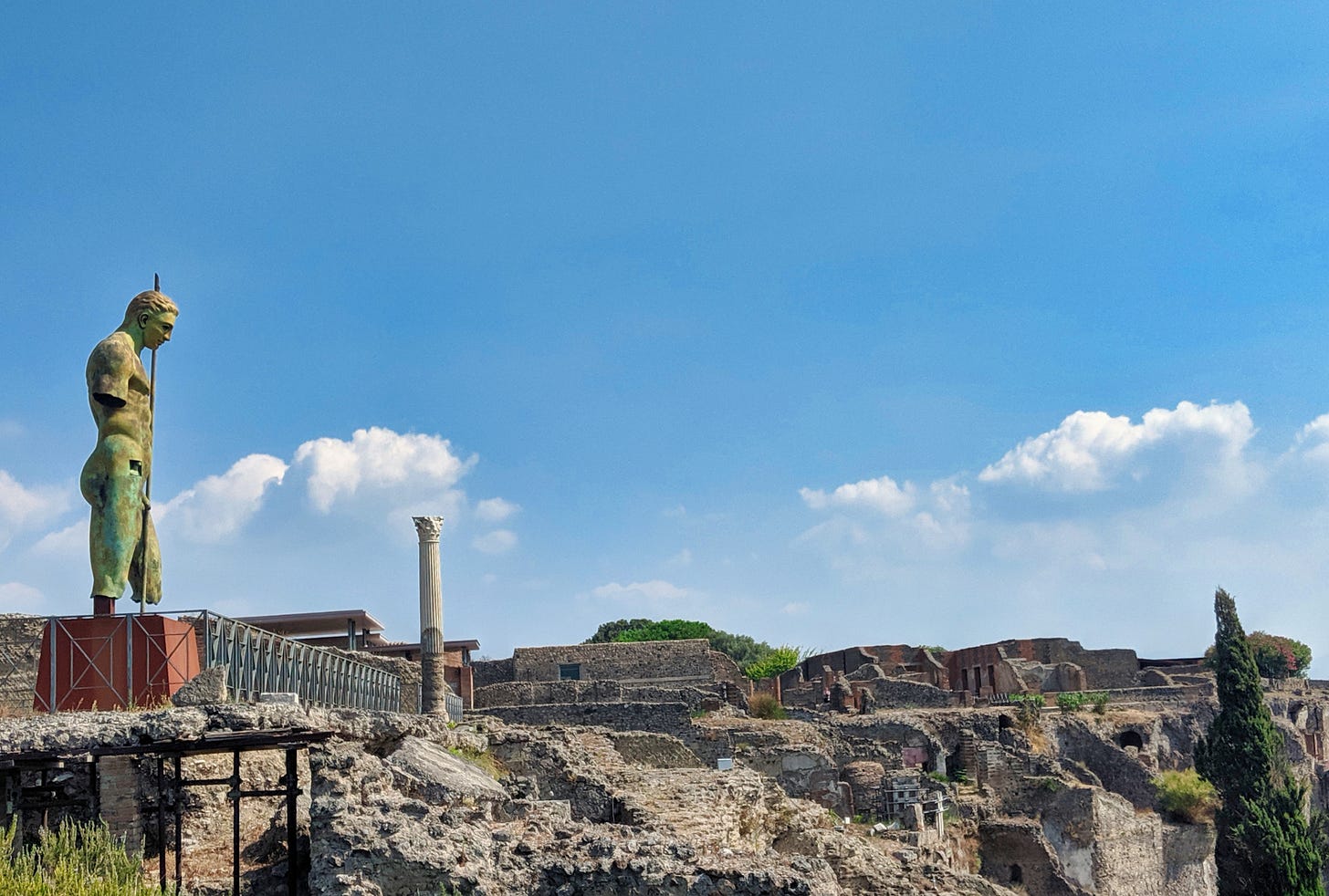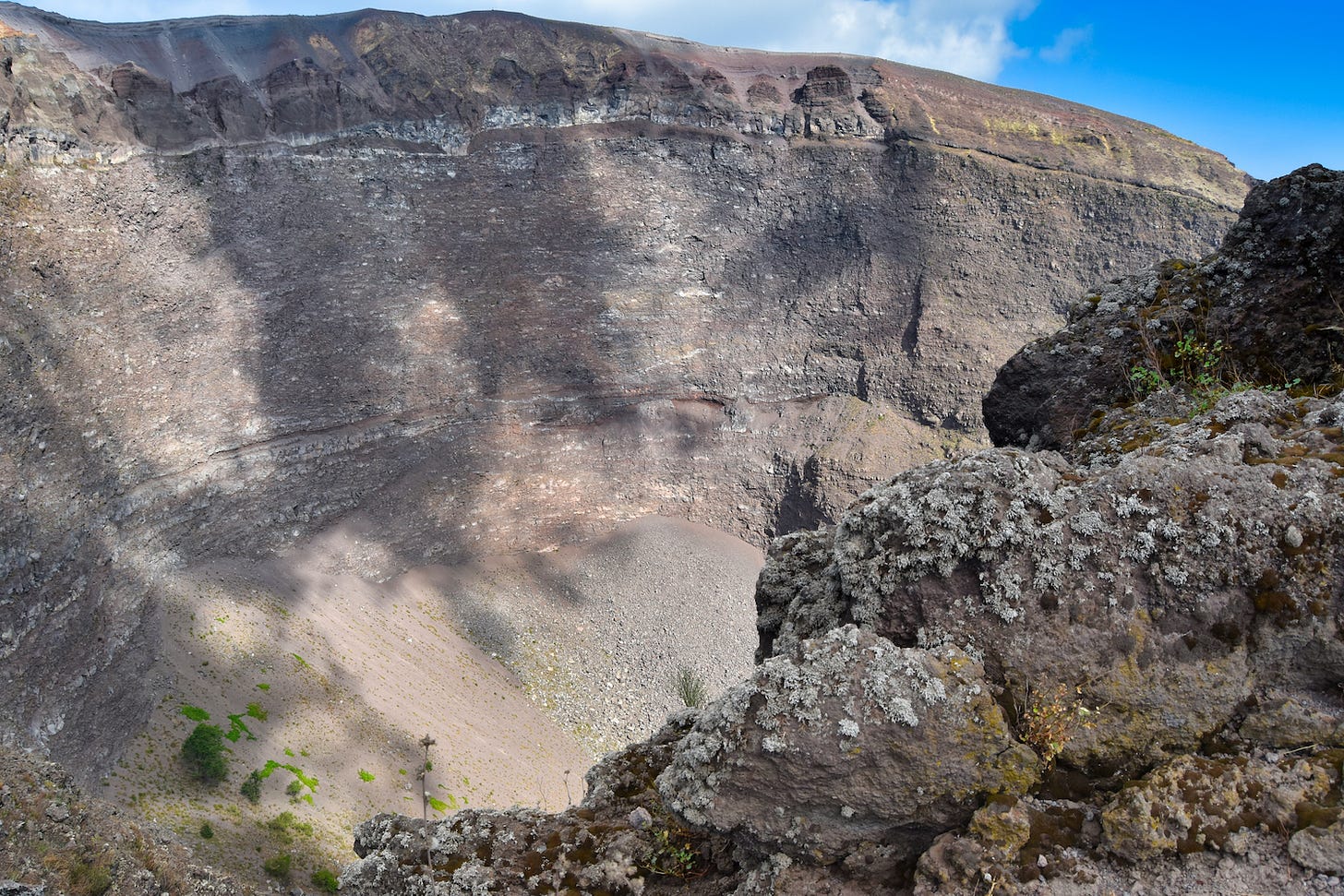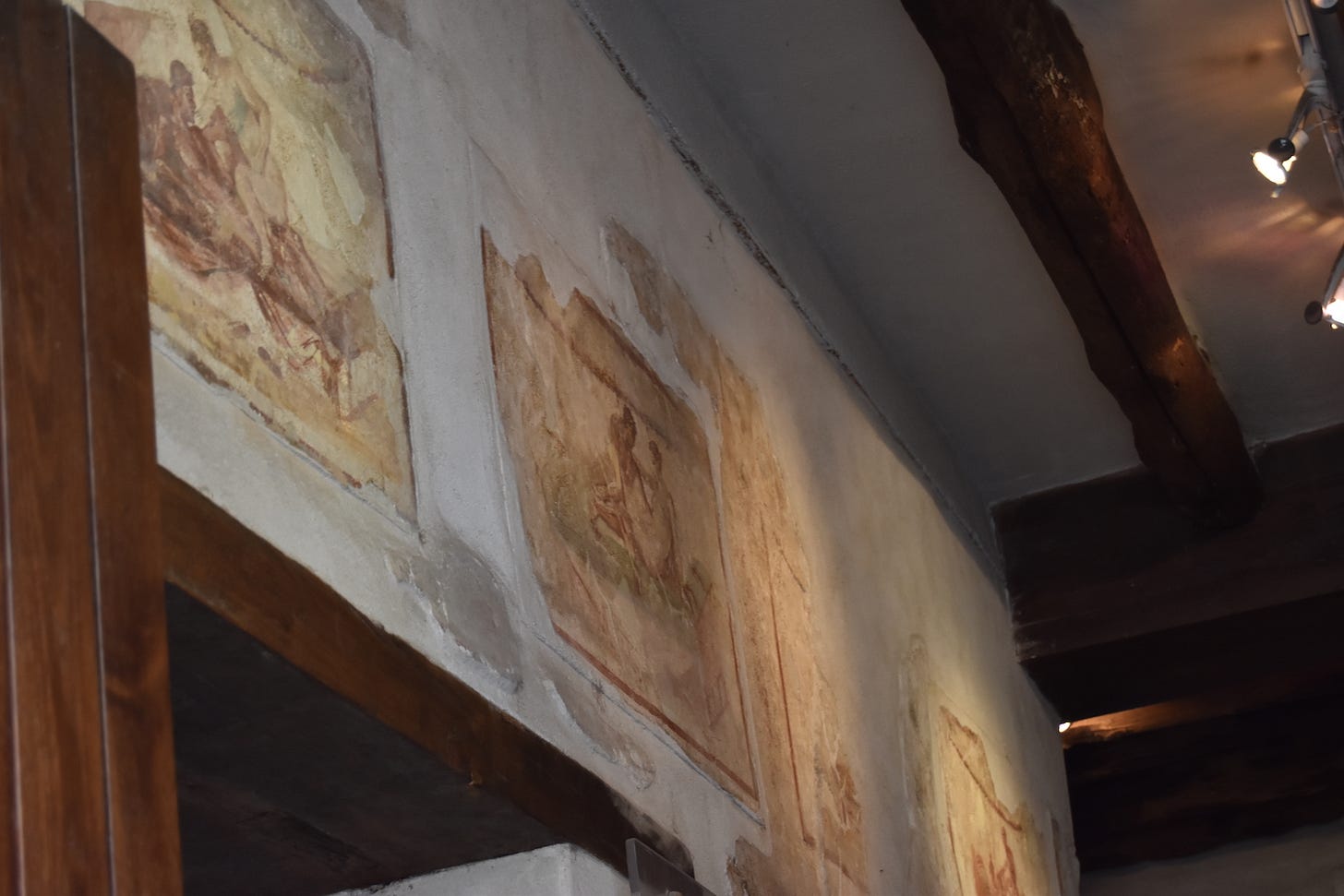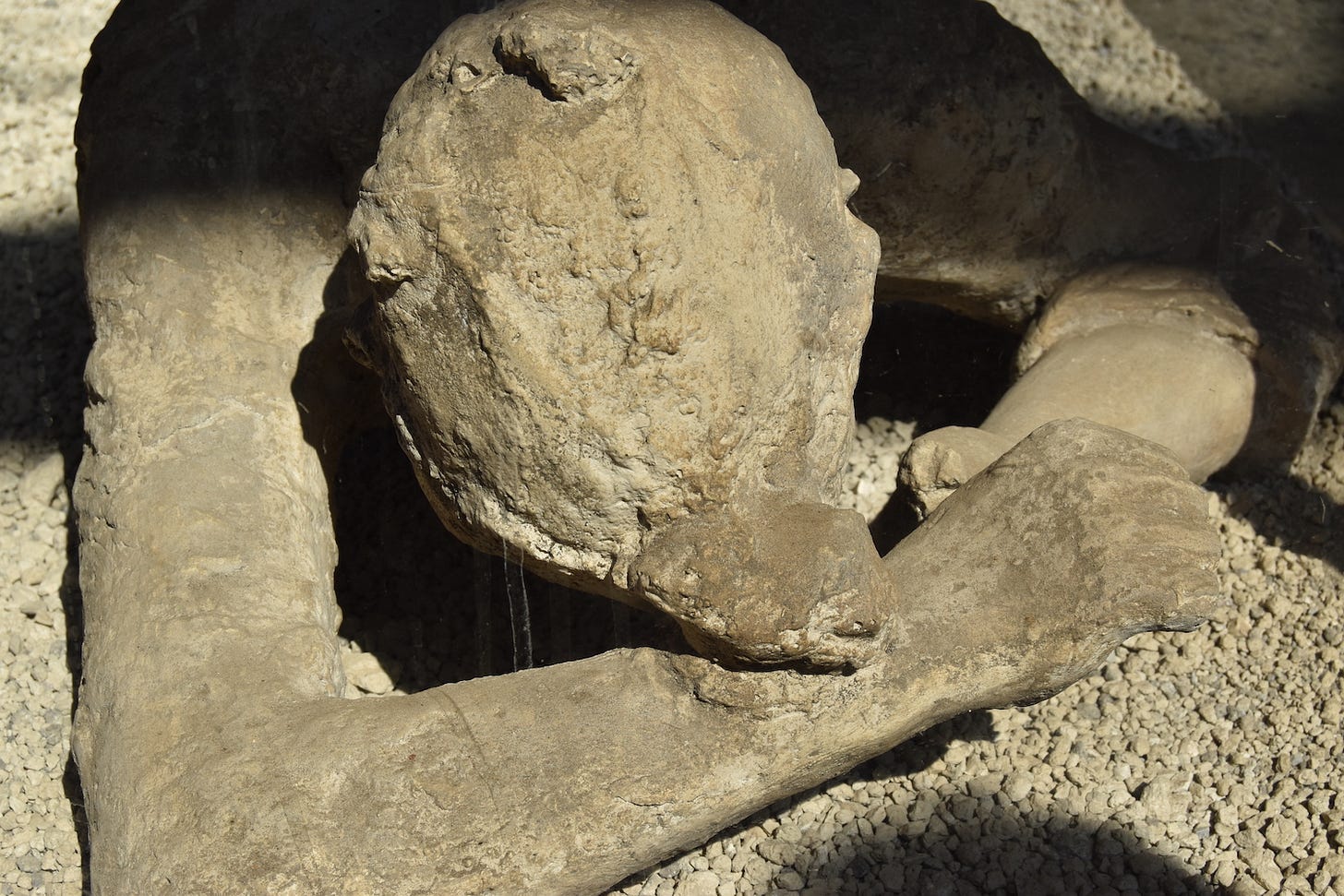Why We are Fascinated by the Ancient Resort City of Pompeii
The apocalypse of Pompeii is moment frozen in time that reflects the modern world and makes us wonder about our own inevitable endings.
The TL;DR
Warnings: Very minor spoiler for the series Loki. Images of death.
Pompeii was an ancient Roman resort city, full of vacation homes for the wealthy and entertainment for the hedonist.
Destroyed in 79 C.E., Pompeii’s last minutes were captured in ash.
It was a city of extreme income and power inequity.
What we have in its final moments is a snapshot of that world and ours.
My latest piece in The Daily Beast is “COVID Won’t Kill Your Summer. Worker Shortages Might.”
Near the city of Naples is the former Roman resort town of Pompeii. In ancient Rome, Pompeii was a destination for not only those passing through the region, but also for the wealthy who had lavish vacation homes there. It was destroyed in one of the most devastating moments in history — Vesuvius erupted in 79 C.E., burying the city and its people in hot ash.
Today, Pompeii is still a destination for tourists, but for very different reasons. Visiting Pompeii is almost like being a time traveler, slipping into the last seconds before an apocalypse. More than a museum of the macabre, Pompeii begs the visitor to consider their own mortality.
It also shows us that society hasn’t changed all that much.
I toured the city in 2019 and then did the Vesuvius hike up to see the still active crater and its steaming vents. It is a surreal experience. At the city, the final seconds of Vesuvius’ victims remain in the form of a mold. Ash encrusted their bodies in their final poses, and when the bodies decayed only a very realistic shell remained. It is a very intimate moment.
From Pompeii, you can see Vesuvius — that bringer of death — staring back at you. At the top of Vesuvius, you become the one inspecting it. You get to see its vent plumes and you get the wide, panoramic view of the area it destroyed.
From a tourism standpoint, Pompeii is an amazing and unique place to visit.
Walking through the streets, you can see where slaves were kept locked up, watching people stroll the streets in the sun. You can pass through the Pompeii amphitheatre, which showcased bloody gladiatorial events. The street is lined with businesses — brothels and food vendors. When you enter the brothel, you are greeted by rooms for customers and a menu painted on the wall where visitors could point to the service they wanted.
The vibe of ancient Pompeii is not hard to pick up when you’re there.
It was an active and lively place, where life overwhelmingly favored the hedonistic wealthy. The income inequity in Pompeii was one of Rome’s highest. In fact, there were warnings that Pompeii was a dangerous place to live. Earthquakes and lava were usually cues that it could erupt as it had in the past. Knowing this, most of the wealthy abandoned their vacation homes ahead of time, leaving behind those who were either too poor to leave or those who did not have the resources to pack up and move their small shops quickly enough.
It is not hard to see why the story of Pompeii has been a fascination of books and movies. (As I was planning last week to write about it, for example, I discovered that the newest episode of Loki visits those last, inevitable moments.) Its intrigue — beyond being a plot point for time-traveling gods — is partly how it forces us to imagine our own last seconds. What would time-traveling gods see if they stepped into those? What would that ash catch us doing in this world?
Would the rich be safe in their super-yachts in the Bay of Naples while others perish? (The answers is yes.)
It is also, however, a reflection of modern society. Inequity dominates our world. The poor, for example, suffer pandemics to a disproportionate degree, and the rich move to their second homes to wait it out and then get a major interview in The New York Times over their “struggle.” The spin would eventually be to blame the poor for the system set up by the rich.
When we visit Pompeii and Vesuvius, we soak in all of its life in one moment. We get the thrill of seeing an ancient, historic city still being excavated and still holding back its secrets. We can imagine what life was like there as we pass its rows of shops and restaurants. We are surrounded by its many ghosts.
We are also faced with the reality that it feels too familiar — that two-thousand years later not much has changed. We are all Pompeii.
Hi, I’m Brandon Withrow. I'm a freelance travel journalist—stranded by the pandemic. You’ll find me in places like The Daily Beast, Business Insider, Sierra Magazine, and The Hill. Follow me on Twitter or Instagram or visit brandonwithrow.com.








